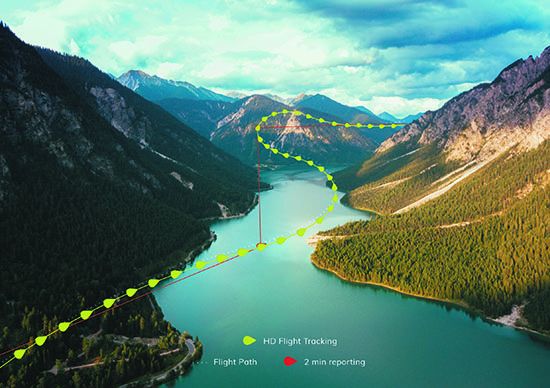While flight tracking systems (FTS) have historically been integral to air carrier and corporate flight ops, New Zealand-based Spidertracks gained traction in the GA market in 2010 with its model S3 portable satellite tracking unit. The Spidertracks is a simple concept. Utilizing aviation-grade hardware, combined with low bandwidth data connections and data delivered over satellite, the trackers lay a moving detailed (and customizable) digital footprint for those on the ground to follow.
The latest Spidertracks device is the $1995 Spider X, which has some radical upgrades from the discontinued Spider 8 product. Herewith is a field report.
CAPABILITIES, HARDWARE
The most current Spidertracks hardware is the Spider X. There is limited inventory of the Spider 8, but it’s discontinued. Support remains in place for the gen one through gen 8 trackers. The Spider X’s theory of operation is the same.
The Iridium satellite-based Spidertracks service provides a number of features and inflight services aimed at pilots and fleet management staff, and helicopter ops is a popular application. There’s plenty of utility for serious tracking and distress calls.
The system includes real-time flight tracking, two-way text and email messaging, flight track recording (Spidertracks calls this Virtual FDR), real-time weather overlays, flight monitoring and distress detection, an emergency management framework, flight event monitoring, historical reporting, manual SOS alerting and VFR/IFR sectional and weather overlays. That’s a lot of capability in one device, although as a whole, it’s a tracking network—Spidertracks software (web and apps), data communication networks and the Spidertracks Cloud.
The semi-portable Spider X device, which measures 5.3 by 4.0 by 1.0 inches and weighs 250 grams, has satellite, cellular and Bluetooth connectivity, a keyboard port, external antenna ports, a power port and internal sensors for AHRS data. Firmware updates are implemented wirelessly and automatically using the cellular network.
New to the Spider X is the cellular connection, for uploading data to the Spidertracks Cloud environment. The device requires input voltage (USB panel power or bus hardwire) and has no internal battery—a shortcoming, in our view.
Spider X is equipped with a super capacitor backup power supply, rather than lithium-ion batteries. This “keep-alive” power enables transmission of the last known position data, even after chopping the power.
Spidertracks sells power cables in two sizes (5 and 7 meters long), but they only fit the Spider X and not previous-gen Spider trackers. The company sells adapters, however, for a workaround.
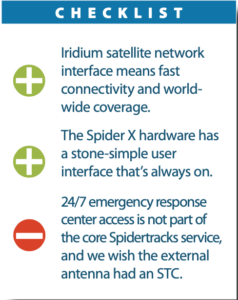
MOUNTING IT
Locating the Spider X device is critical for receiving the Iridium sat signal. The optimal installation has a 164-degree unobstructed view of the sky, but that may not be practical in all cockpits, plus heated windshields and metal and composite structures can kill the signal. Spidertracks sells an external Iridium GPS antenna for mounting on the outside of the aircraft. If you’re serious about tracking, you’ll install one.
By default, the Spider hardware uses the internal GPS and Iridium satellite antennas, and the Spider mobile app is used to reconfigure it. The external antenna doesn’t have an STC or a TSO, but we’ve heard that U.S. operators have been lobbying for FAA field approval (and DER approval for pressurized aircraft).
Additionally, Blue Sky Network (www.blueskynetwork.com), a manufacturer of Iridium-compatible antennas, has STCs for aircraft ranging from Cessna 414s to Boeing 757s, for both the FAA and EASA requirements. At $950, the Blue Sky’s STC’d antenna is roughly twice the price of Spidertracks non-certified antenna.
For advanced interfaces, the Spider 8 has the Universal Aircraft Interface port for interfacing the device with the aircraft’s systems. The 10-pin GPIO port is for sensing and communicating the state of inputted accessories and systems to the Spidertracks network as a visible part of the aircraft’s flight track. There’s engine on and off, aircraft takeoff and landing, plus the disposition of water tanks and buckets for firefighting missions.
The Spider X doesn’t have the GPIO interface, but instead has a built-in AHRS. For typical GA flying, we think the Spider X (priced the same as the 8) is the better choice.
NETWORK AND SOFTWARE
Spidertracks uses the Iridium satellite network to deliver tracking, SMS/text and email messages to the Spidertracks Cloud. The Iridium satellite constellation is made up of a fully meshed network of 66 cross-linked satellites (and seven spare satellites) that orbit 485 miles above the Earth. The network was upgraded in 2019 with the Iridium-NEXT next-gen satellites. Coverage is essentially worldwide and reliable. Traveling at more than 18,000 miles an hour, each satellite makes a full orbit of the planet every hour and a half. That means one satellite passes overhead every ten minutes.
The expensive and time-consuming upgrade was worth it, and seemingly hits the intended goals for both commercial and non-commercial GA ops. “Iridium’s aviation partner ecosystem plays a critical role in connecting all types of aircraft with truly global, weather-resilient and reliable connectivity,” says Michael Hooper, Iridium’s Director of Aviation. But it’s no secret that satcom data costs are eye-widening. The Spider X hardware has some tech built in to keep network costs in check, with a cellular data modem.
The device is designed to utilize the Iridium satellite network while airborne, delivering small data packets, like GPS location and messaging. Large amounts of data created by the Spidertracks AHRS system (pitch, roll, G forces, etc.) are pushed to the Spidertracks Cloud using the cellular network when the aircraft is within range of a cellular tower. This approach to least-cost data routing provides Spidertracks with the ability to create deeper integration points with the aircraft’s avionics suites.
Step one of implementing Spidertracks (after acquiring the hardware) is to set up an account using the web portal https://app.spidertracks.io. The web portal is pretty simple, with a configuration gear icon providing setup and edits to organization, people, aircraft and billing information. To add a user, the administrator simply goes to the Gear, People, Add where the name, email address and mobile telephone number is added. Once saved, the system will send an email to the invited user, who then creates a password—pretty standard stuff these days.
Once logged in, the invited user can enter other information like time zone and their contact information. Then the user can download the Spidertracks app to an Apple or Android smartphone. The Spidertracks features and functionality can be accessed through an internet portal for the flight department and displayed on large monitors or smart televisions.
Aircraft are added into the system by adding each Spidertracks hardware serial number and adding the specifics about the aircraft. The next step is to set up the emergency management system (SOS) for each aircraft and the organization. The internet-based system has a lot of flexibility, with the heart of it being infight tracking and SOS alerts. Users who were set up indicate their role (Tier One, Tier Two or None). It’s an extremely deep interface, the specifics too detailed to even cover in one article, with SOS an integral function.
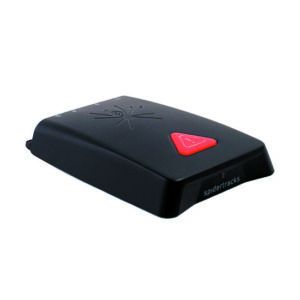
SPIDERWATCH SOS
The design of the Spidertracks SOS system is based upon the pilot and aircraft being supported by a flight department. Members of the flight department become the first contact to call search and rescue (SAR) services when an aircraft is overdue or has deviated from its flight plan. Spidertracks does not include in its service an outsourced SAR service, such as the International Emergency Response Coordination Center (IERCC), which is now part of Garmin.
Pilots not supported by a 24/7 flight department might consider an SOS plan with one of a number of emergency response center (ERC) providers, independent of the Spidertracks solution. In essence, the ERC becomes one of the Tier One contacts set up in the Spidertracks account. See Global Rescue (www.globalrescue.com) and FocusPoint International (www.focuspointintl.com). Creating an emergency response plan is important to determine who does what when an SOS alert is received (and is not a false positive).
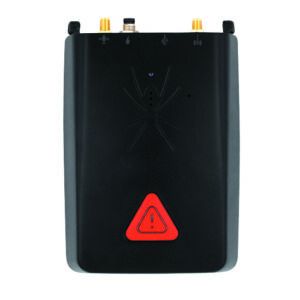
Spidertracks uses the concept of a Tier One and Tier Two support staff to deal with an SOS alert. When an SOS alert is generated, the notification will be sent to the selected Tier One contacts and then 15 minutes later to the selected Tier Two contacts. The email sent to the contacts will include a link to a Spidertracks website to view the track of the aircraft.
The SMS text message indicates that an SOS has been sent and includes the link to the SOS information. You can reply with “close” to cancel the SOS or “SOS” to escalate the alert. If you have a flight board display or an employee viewing the Spidertracks Flying Page, the SOS alert will automatically pop on the display.
SpiderWatch is the SOS mechanism that emails or text messages alerts in the event of an incident. Watch mode sends the aircraft’s position to the Spidertracks system every one to two minutes after takeoff. Upon landing, the Watch button must be pressed to advise the system that the flight has concluded normally. A distress message will be sent when Watch is not pressed upon landing, or connectivity to the Iridium network is lost for more than 15 minutes. Spidertracks recommends that the pilot be a recipient of the SOS text messages. That makes sense because if the pilot also receives the alert, they can reply “close” to the text and it will cancel the alert and send a message to the other recipients that the user has canceled the alert. It can also serve as a reminder to close the flight plan.
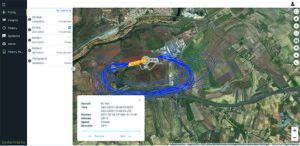
OTHER FEATURES
Spidertracks’ Virtual FDR system (VFDR) leverages the Spider hardware onboard sensors to generate AHRS data and a position report every 15 seconds, or more frequently during heading changes. The positions are then transmitted to the Spidertracks platform in small batches as permitted by the satellite network conditions, generating an accurate representation of the aircraft’s flight path. Alfred D’Mello of OGL Engineering reports real-world use:
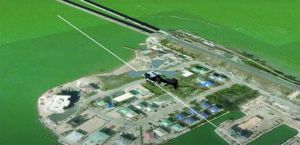
“The office people love VFDR. Before, we had a vague idea of what the pilots have flown, but with the increased number of position reports (one a minute and every 30 degrees of heading change), we can see the exact maneuvers of the aircraft.” It’s sort of a spy in the cockpit because the feature reveals flying habits outside of a normal baseline to be reviewed with management to help crews refine the way they fly the aircraft—60-degree banks and rapid climbs will no longer go unnoticed.
For added flexibility, Spidertxt (an optional service, but included in the Insights pricing package) allows text messages to be sent and received by the Spidertracks app (installed on an iPhone or Android device) to users within your organization. In other words, you can’t natively use your smartphone’s Message or Mail apps to send messages to your contacts. To use the app, first you need to open it and log in to your Spidertracks account, which requires a cellular or Wi-Fi connection.
Spidertxt messages are limited to 120 characters. A notification will appear on the app’s menu bar if you’ve received a new message. Members of your organization (i.e., flight followers) can message directly from their computers or smart devices (using the Spidertracks web or app) using cellular or Wi-Fi connections. The Spidertracks app will automatically log a user out every six months, an important consideration if you’re airborne. If you’re going flying and want to use Spidertxt, make sure that you are logged out from all other devices (such as the Spidertracks website) before connecting your smartphone or tablet to the Spider hardware.
PRICING
Spidertracks costs, per aircraft, are based upon a one-time hardware purchase and a monthly subscription fee. The monthly subscription is based upon the annual number of tracking hours and can be customized for large fleet owners.
The Essential package is for recreational pilots typically flying under 150 hours per year or seasonally. The monthly billing for Essential is $29, plus usage of $2.00 per flight hour or $2.50 per flight hour with unlimited Spidertxt messaging.
The $79 Basic plan is designed for a fleet operator and includes 600 hours per year of usage. For an operator with multiple aircraft, the 600 hours are pooled across its fleet, i.e., an operator with three aircraft will have a pool of 1800 hours, which all aircraft will use. Once the hours are used up, overage is billed at $2.00 per flight hour. For the Basic service, Spidertxt is optional and billed at $15 per aircraft per month.
Insights is Spidertracks’ $149 top- level plan and includes unlimited utilization and access to FDR data generated by Spider X as we’ll as all dashboards.
All plans include real-time tracking, 3D flight replay (requires Spider X), unlimited number of user accounts, automated SOS reporting and Flight Events monitoring. The Essential and Basic plans do not include the safety management features of Insights. Interestingly, Spidertracks monthly plans do not charge appropriate taxes. In Canada, as an example, this saves the customer roughly 13 percent (depending upon the province). Like Netflix, this may change when tax agencies smarten up to offshore- delivered services.
The hardware cost of the remaining Spider 8 units is $1995 and the current Spider X is priced the same. Spidertracks offers a variety of accessories for their hardware including a mounting bracket ($40), programming lead ($40), 2-meter power lead ($40), 5-meter power lead ($60), Spider X keypad ($249), Spider 8 keypad ($300), a power lead adapter for Spider 8 to X ($45) and the Iridium GPS antenna ($500). From time to time, Spidertracks offers discounts on both its hardware and service. For large fleet operators, contact Spidertracks sales directly for customized quotes.
Worth mentioning is that Spidertxt is offered free for the first month for users to try it out. After the first month, the user must opt out, or the service will be billed (for those not on the Unlimited plan). Spidertracks invoices include the number of pooled hours remaining until the end of the yearly commitment. Operators are able to change their plans (either up or down) to match their operational requirements, without penalty. Operators are also able to have mix-and-match plans based upon the needs of each aircraft, which can add more flexibility to the budget.
The FAA and Leidos FSS have created two services (SE-SAR and eSRS) designed to utilize the SOS and location capabilities of PLDs and FTSs, including Spidertracks. These systems are designed to allow PLDs and FTS devices to send SOS alert messages and tracking information directly to FSS, allowing the response of SAR to start as soon as possible.
Leidos Flight Services offers surveillance-enhanced SAR (SE-SAR), using either a fixed or portable PLD. The system monitors position reports sent from the flight tracker when activated within your Pilot Web account at www.1800wxbrief.com. Adding Spidertracks to your Pilot Web account is pretty simple. When the system receives an SOS signal, SE-SAR will alert an inflight specialist who will begin the SAR process—apparently much faster than traditional procedures. To set that up, simply select the SE-SAR button on “Dashboard” and add a device. You’ll need to know the ESN of the Spidertracks hardware.
The Spidertracks Automated Flight Following (AFF) system transmits tracking data through to third-party providers. This feature transmits electronic breadcrumbs to Flight Services for an aircraft on an active flight plan with specific providers worldwide, as specified and requested by the customer. Spidertracks drops an EB every 15 seconds and increases to every five seconds with a heading change. The FSS integration is a good belt-and-suspender backup when flying in remote areas.
WHAT’S NEXT?
Spidertracks is working on a new hardware platform, with hardwired communications ports to provide a physical connection to the aircraft’s avionics suite. Using aviation standards, data created in the avionics suite could be streamed to the new Spidertracks hardware. For example, Garmin’s G3000 flight deck supports flight data logging, which automatically stores flight and engine data on an SD card (in the G3000). Spidertracks is working on adding GPIO port capabilities to the Spider X sometime in the future.
In future releases, using the data collected during the flight, plus an analytical software engine, Spider X could automatically generate alerts using the Automated Watch technology, eliminating the human factor (which requires pressing the Watch button at the conclusion of the flight).
With all the work in virtual reality, I’m curious when Spidertracks will integrate into the Metaverse using its Virtual FDR technology, combined with virtual reality technology like Oculus VR headsets. Imagine being able to fly an existing flight from the pilot’s perspective. That could be quite the instructional tool for chief pilots and flight schools.
Spidertracks is an interesting technology, using the idea that the pilot must “do” something to report the flight safely concluded. If any of a variety of conditions are met, Spidertracks will automatically generate a SOS alert. I can see a future where Spidertracks removes the human factor from the mix, using big data, cloud computing and analytics to determine if a flight completed safely (through a future platform release). With rules-based tracking, in the event of an accident, then responsible persons will be alerted to contact SAR and initiate the rescue process.
That’s a novel approach to help saving lives, acting as belts and suspenders to the aircraft’s ELT. But this is just the tip of the iceberg, with technology providing more inputs into safety management systems, real-time flight tracking and virtual flight replays.
Visit www.spidertracks.com.

